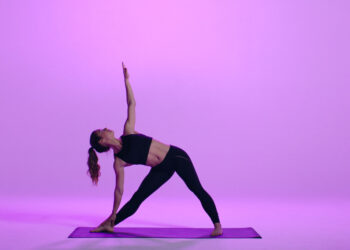Introduction: Redefining Exercise Beyond Physical Activity
Exercise is often perceived narrowly as a mere physical endeavor aimed at weight loss or muscle gain. However, its true essence transcends these goals, embodying a holistic approach to well-being that harmonizes the mind, body, and spirit. This article explores the multifaceted benefits of exercise, offers practical insights for incorporating it into daily life, and highlights how movement can be a powerful catalyst for transformation and vitality.
The Comprehensive Benefits of Exercise
Exercise is a cornerstone of health, offering an impressive array of benefits that extend beyond physical fitness.
-
Physical Health Enhancement: Regular movement strengthens the cardiovascular system, improves muscular endurance, and boosts flexibility. It helps regulate weight, lowers blood pressure, and reduces the risk of chronic illnesses such as diabetes and certain cancers.
-
Mental Clarity and Emotional Balance: Exercise stimulates the release of endorphins, often referred to as ‘feel-good’ hormones, which alleviate stress, anxiety, and depression. It fosters improved cognitive function, memory retention, and sharper focus.
-
Longevity and Quality of Life: Engaging in consistent physical activity contributes to increased lifespan and a higher quality of life by maintaining mobility and independence well into older age.
-
Social Connection: Group activities or fitness communities encourage social interaction, enhancing emotional support and motivation.
Types of Exercise and Their Unique Contributions
To fully harness the power of exercise, understanding various forms and their specific advantages is essential.
1. Cardiovascular (Aerobic) Exercise
-
Activities such as running, cycling, swimming, and brisk walking.
-
Benefits include improved heart and lung capacity, calorie burning, and enhanced stamina.
-
Recommended frequency: At least 150 minutes of moderate aerobic activity per week.
2. Strength Training
-
Involves resistance exercises using weights, resistance bands, or body weight.
-
Builds muscle mass, strengthens bones, and boosts metabolism.
-
Suggested to engage in strength training 2-3 times per week.
3. Flexibility and Mobility Exercises
-
Practices like yoga, Pilates, and stretching routines.
-
Enhance joint range of motion, reduce injury risk, and promote relaxation.
-
Should be integrated regularly, ideally daily or post-workout.
4. Balance and Coordination
-
Includes activities such as tai chi and specific balance drills.
-
Particularly beneficial for older adults to prevent falls and maintain stability.
Practical Strategies for Incorporating Exercise Into Daily Life
Despite its known benefits, maintaining a consistent exercise routine can be challenging. These strategies encourage sustainable engagement:
-
Set Realistic Goals: Start with achievable objectives tailored to individual fitness levels and gradually increase intensity.
-
Find Activities You Enjoy: Whether dancing, hiking, or swimming, enjoyment fuels motivation and consistency.
-
Schedule Exercise: Treat workouts as appointments to build routine and accountability.
-
Mix It Up: Variety prevents boredom and promotes balanced fitness by targeting different muscle groups and energy systems.
-
Use Technology: Fitness apps, trackers, and virtual classes can offer guidance and encouragement.
Overcoming Common Barriers to Exercise
Recognizing and addressing obstacles helps in sustaining a fitness regimen.
-
Time Constraints: Incorporate short, high-intensity interval training (HIIT) sessions or split workouts into manageable segments.
-
Lack of Motivation: Partner with a workout buddy or join group classes for social support.
-
Physical Limitations: Adapt exercises to accommodate injuries or chronic conditions, seeking professional advice when necessary.
-
Environmental Factors: Utilize home workouts or find local parks and facilities that support activity.
The Mind-Body Connection: Exercise as a Meditative Practice
Exercise can also serve as a form of moving meditation, cultivating mindfulness and presence. Focusing on breath, movement, and bodily sensations during physical activity can deepen self-awareness and foster emotional resilience. This integrative approach enriches the overall experience, turning exercise into a sanctuary for mental rejuvenation.
Nutrition and Recovery: Supporting Exercise for Optimal Results
Physical activity and nutrition are intrinsically linked. Fueling the body with balanced meals rich in protein, healthy fats, and complex carbohydrates enhances energy and recovery. Additionally, prioritizing rest, hydration, and quality sleep is vital to repair muscles, prevent burnout, and sustain performance.
Exercise Across the Lifespan: Adapting for Every Stage
Exercise needs evolve with age and life circumstances. Children benefit from playful activities promoting motor skills; adults gain from structured routines supporting career and family demands; seniors require gentle movement to preserve mobility and prevent frailty. Tailoring exercise to life stages maximizes benefits and fosters lifelong habits.
Conclusion: Embracing Exercise as a Lifelong Journey
Exercise is far more than physical exertion—it is an empowering practice that elevates every facet of human existence. By embracing diverse movement forms, cultivating mindfulness, and honoring individual needs, exercise becomes a joyful, sustainable journey toward holistic wellness. Through this transformative lens, every step, stretch, and breath becomes a testament to the enduring power of the human body and spirit.




